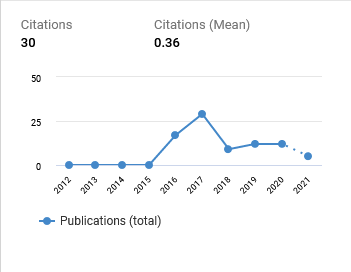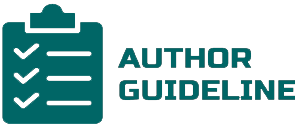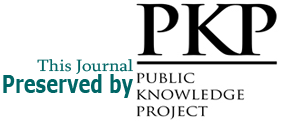Residential Adaptation in High Noise Areas
case study: the settlement of Maleber Utara Street
DOI:
https://doi.org/10.29080/eija.v6i2.1110Keywords:
Noise, Rhythmanalysis, Railway traffic, Road traffic, settlement, road traffic.Abstract
Settlement along Maleber Utara street is a unique case of settlement with a unique condition:it conjuncts with three known noise sources; road traffic, railway traffic, and air traffic. The ideal house is a house in a tranquil environment. Exposure to constant noise proofed could cause health and well-being problems. Hence, there must be some house adaptations to reduce the noise. This research aims to describe forms of adaptation that Jalan Maleber settlers did in response to high-noise environment situations. Thisresearchis a descriptivequalitative research conducted with interview and observation using therhythm analysis approach. Data werecollectedd by interview and observation, and Samples were chosen by the snowball sampling method. The result showed that noisy conditionsvarious responsesmade by Jalan Maleber Utara settlers. The invention of a new rhythm could achieve Eurhythmiaby every settler in handling noise source rhythm that tends to be a pathology. Even so, arrhythmia could not be avoided,and it could happen if there were no advance action in response to this condition. The intensity of the noise increases, in line with population and economic growth. This research gave a description and solution for noise conditionsin Jalan Maleber Utara Settlement
Downloads
References
Berglund, B., Lindvall, T., & Schwela, D. H. (2000). New Who Guidelines for Community Noise. Noise & Vibration Worldwide, 31(4), 24–29. https://doi.org/10.1260/0957456001497535
Chung, W. K., Chau, C. K., Masullo, M., & Pascale, A. (2019). Modelling perceived oppressiveness and noise annoyance responses to window views of densely packed residential high-rise environments. Building and Environment, 157, 127–138. https://doi.org/10.1016/j.buildenv.2019.04.042
De Salis, M. H. F., Oldham, D. J., & Sharples, S. (2002). Noise control strategies for naturally ventilated buildings. Building and Environment, 37(5), 471–484. https://doi.org/10.1016/S0360-1323(01)00047-6
Dzhambov, A. M., & Dimitrova, D. D. (2015). Green spaces and environmental noise perception. Urban Forestry & Urban Greening, 14(4), 1000–1008. https://doi.org/10.1016/j.ufug.2015.09.006
Ebster, C. (2011). Store Design and Visual Merchandising: Creating Store Space That Encourages Buying. Business Expert Press.
Ester, O., Kelsey, M., Sutcliffe Robynne, Barbara, H., B., F. K., Dragano Nico, Viehmann Anja, Erbel Raimund, Jöckel Karl-Heinz, Pundt Noreen, & Moebus Susanne. (2016). Residential Road Traffic Noise and High Depressive Symptoms after Five Years of Follow-up: Results from the Heinz Nixdorf Recall Study. Environmental Health Perspectives, 124(5), 578–585. https://doi.org/10.1289/ehp.1409400
Guarinoni, M., Ganzleben, C., Murphy, E., & Jurkiewicz, K. (2012). Towards A Comprehensive Noise Strategy. Directorate General for Internal Policies Environment, Public Health and Food Safety; BNY Acoustic Italia. http://www.bny.it/pdf/ipol_envi_et_2012_492459_en.pdf
Han, X., Huang, X., Liang, H., Ma, S., & Gong, J. (2018). Analysis of the relationships between environmental noise and urban morphology. Environmental Pollution, 233, 755–763. https://doi.org/10.1016/j.envpol.2017.10.126
Kumar, Rajendar. (2008). Research Methodology. APH Publishing.
Kumar, Ranjit. (2018). Research Methodology: A Step-by-Step Guide for Beginners. SAGE.
Lefebvre, H. (1992). The Production of Space. Wiley.
Licitra, G., Fredianelli, L., Petri, D., & Vigotti, M. A. (2016). Annoyance evaluation due to overall railway noise and vibration in Pisa urban areas. Science of The Total Environment, 568, 1315–1325. https://doi.org/10.1016/j.scitotenv.2015.11.071
Miedema H M & Oudshoorn C G. (2001). Annoyance from transportation noise: Relationships with exposure metrics DNL and DENL and their confidence intervals. Environmental Health Perspectives, 109(4), 409–416. https://doi.org/10.1289/ehp.01109409
Oral, G. K., Yener, A. K., & Bayazit, N. T. (2004). Building envelope design with the objective to ensure thermal, visual and acoustic comfort conditions. Building and Environment, 39(3), 281–287. https://doi.org/10.1016/S0360-1323(03)00141-0
Ow, L. F., & Ghosh, S. (2017). Urban cities and road traffic noise: Reduction through vegetation. Applied Acoustics, 120, 15–20. https://doi.org/10.1016/j.apacoust.2017.01.007
Paunović, K., Jakovljević, B., & Belojević, G. (2009). Predictors of noise annoyance in noisy and quiet urban streets. Science of The Total Environment, 407(12), 3707–3711. https://doi.org/10.1016/j.scitotenv.2009.02.033
Potts, T. (2015). Rhythmanalysis: Space, Time and Everyday Life. The Journal of Architecture, 20(3), 550–554. https://doi.org/10.1080/13602365.2015.1052662
Simpson, P. (2012). Apprehending everyday rhythms: Rhythmanalysis, time-lapse photography, and the space-times of street performance. Cultural Geographies, 19(4), 423–445. https://doi.org/10.1177/1474474012443201
Tenailleau, Q. M., Bernard, N., Pujol, S., Houot, H., Joly, D., & Mauny, F. (2015). Assessing residential exposure to urban noise using environmental models: Does the size of the local living neighborhood matter? Journal of Exposure Science & Environmental Epidemiology, 25(1), 89–96. https://doi.org/10.1038/jes.2014.33
Torresin, S., Albatici, R., Aletta, F., Babich, F., Oberman, T., & Kang, J. (2019). Acoustic Design Criteria in Naturally Ventilated Residential Buildings: New Research Perspectives by Applying the Indoor Soundscape Approach. Applied Sciences, 9(24), 5401. https://doi.org/10.3390/app9245401
Van Renterghem, T., Hornikx, M., Forssen, J., & Botteldooren, D. (2013). The potential of building envelope greening to achieve quietness. Building and Environment, 61, 34–44. https://doi.org/10.1016/j.buildenv.2012.12.001

Downloads
Published
How to Cite
Issue
Section
Categories
License
- Authors retain copyright and grant the journal right of first publication with the work simultaneously licensed under a Creative Commons Attribution ShareAlike License that allows others to share the work with an acknowledgment of the work's authorship and initial publication in this journal.
- Authors are able to enter into separate, additional contractual arrangements for the non-exclusive distribution of the journal's published version of the work (e.g., post it to an institutional repository or publish it in a book), with an acknowledgment of its initial publication in this journal.
- Authors are permitted and encouraged to post their work online (e.g., in institutional repositories, pre-print sites, or on their website) prior to and during the submission process, as it can lead to productive exchanges, as well as earlier and greater dissemination of published work.
































